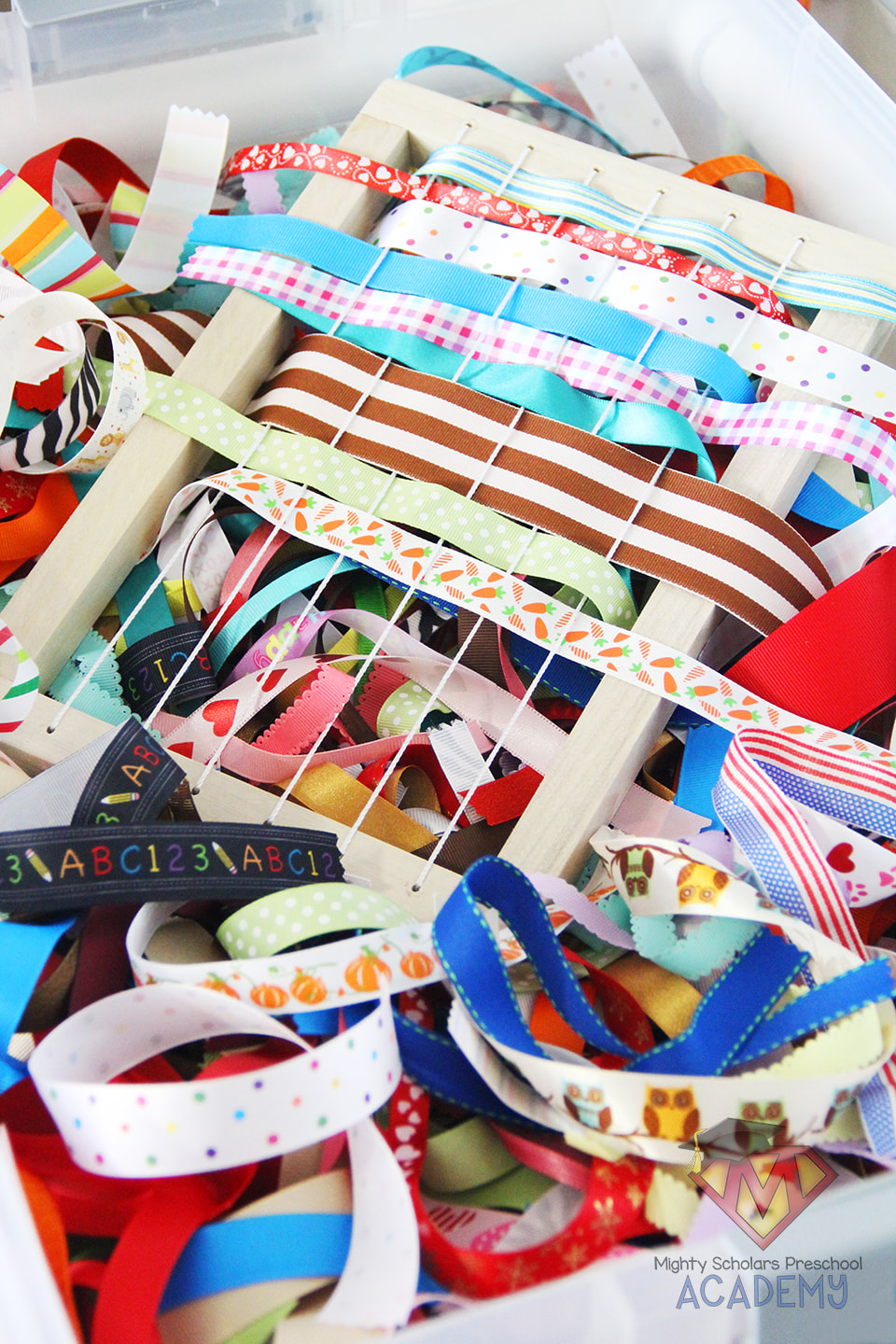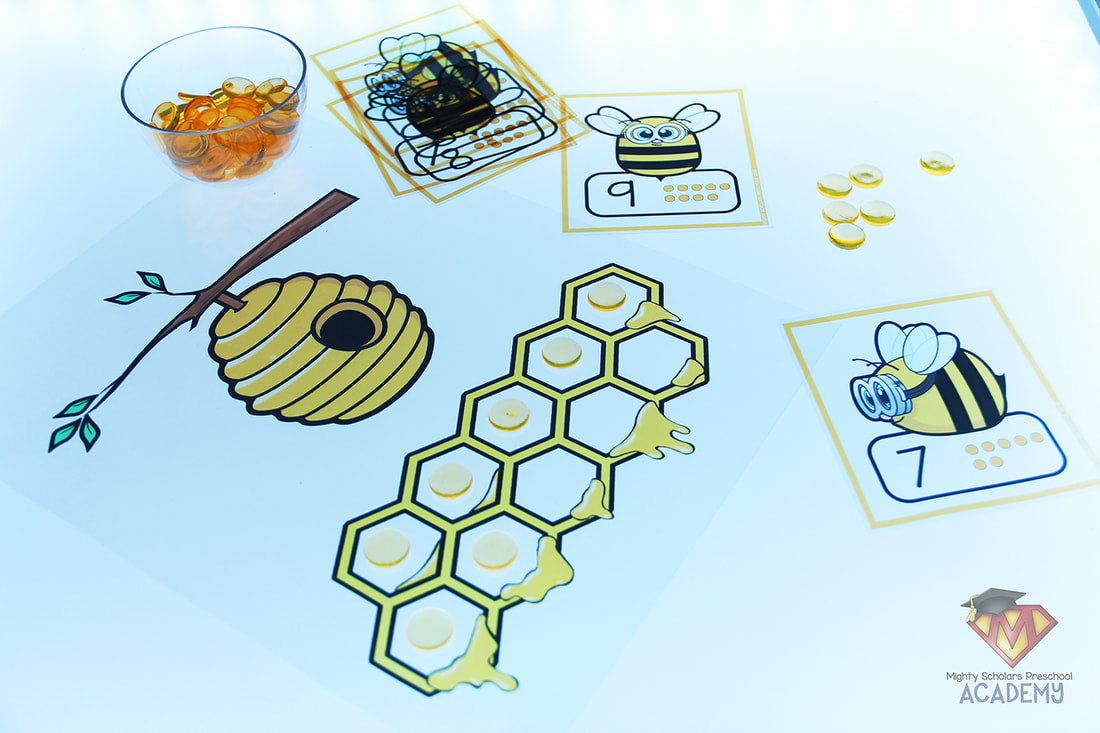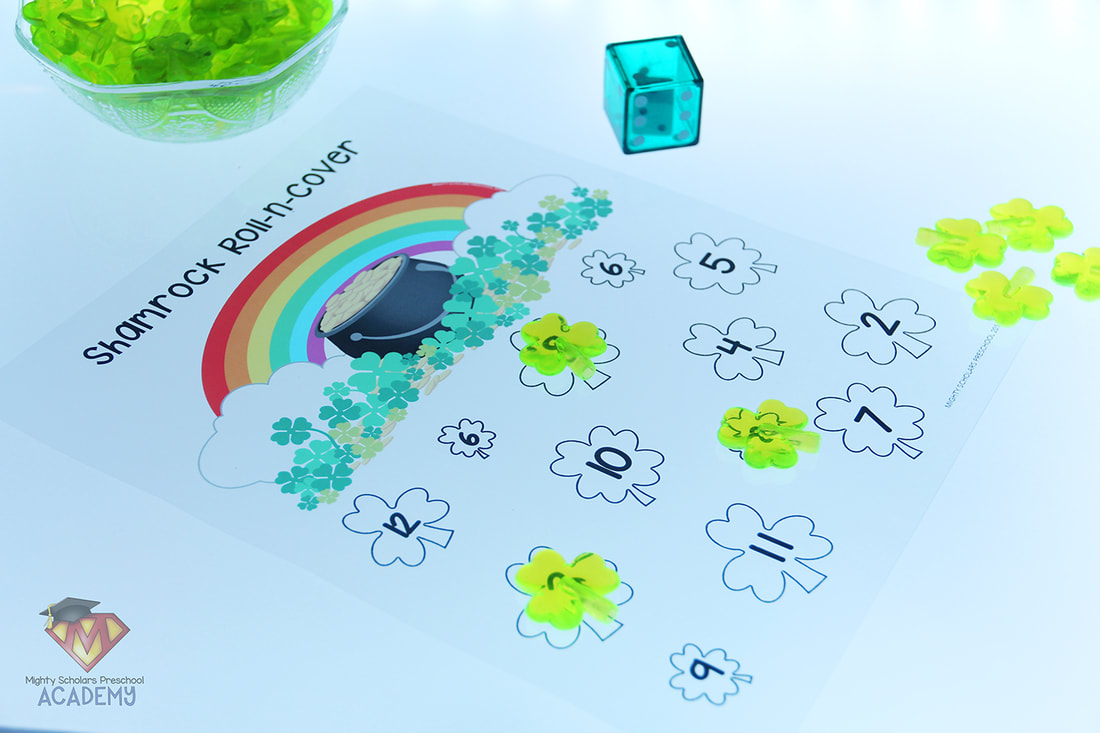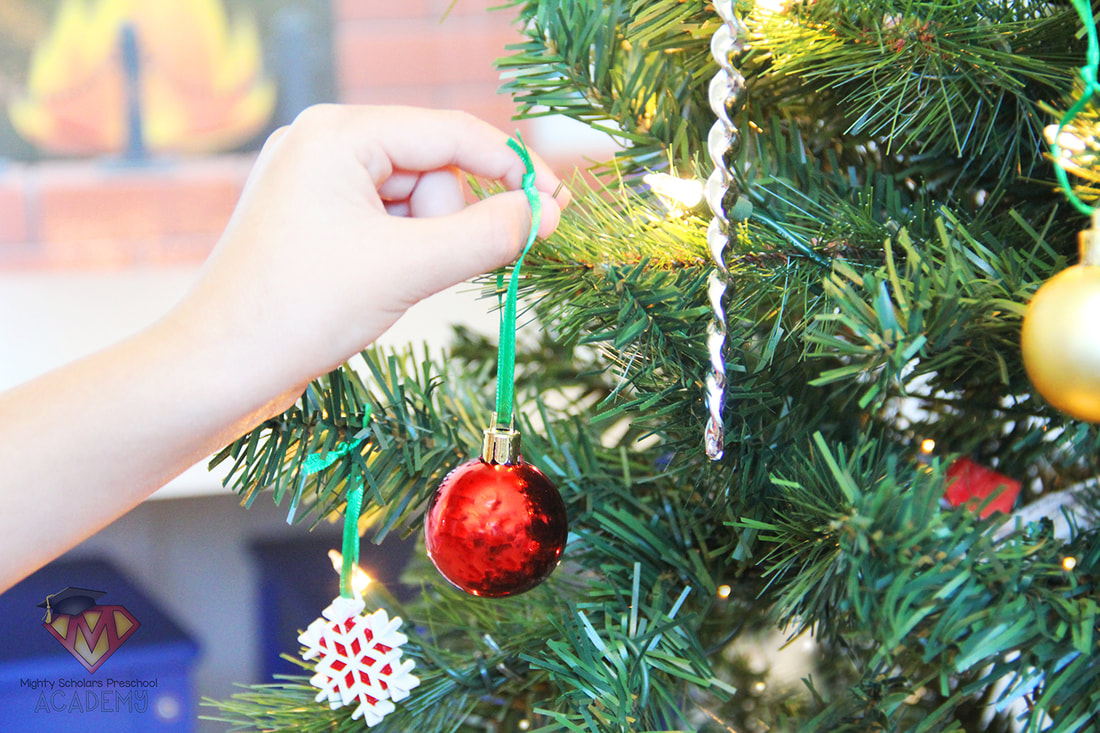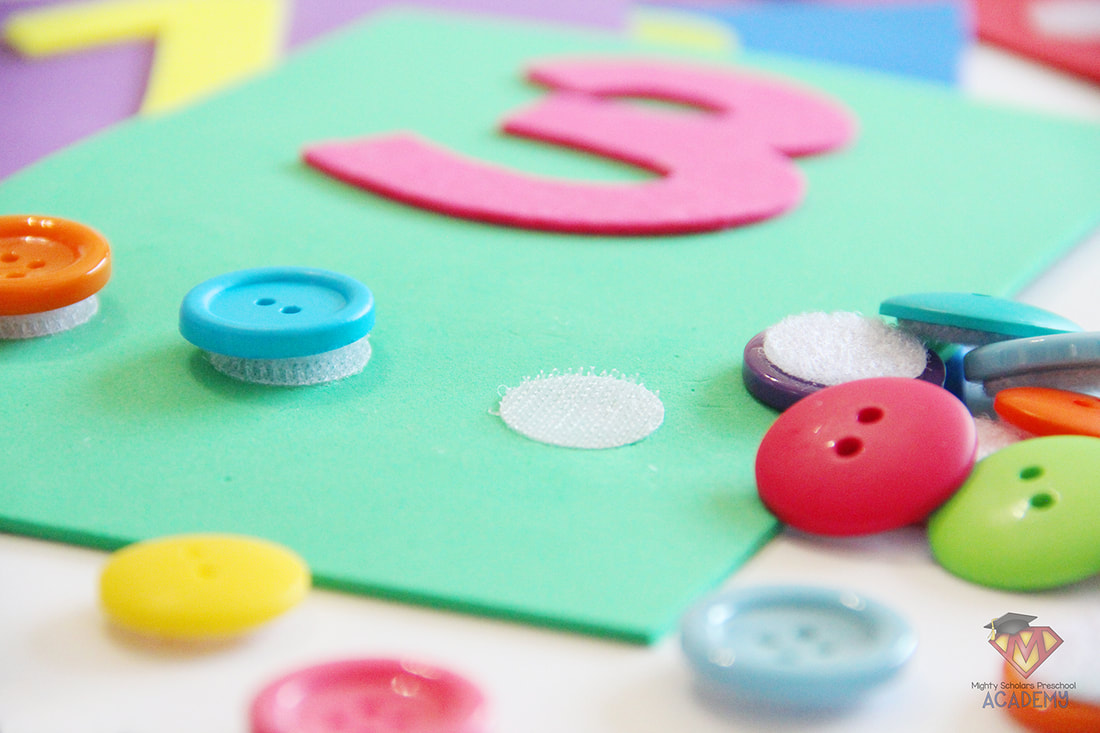|
Ribbons of various colors and patterns weave beautiful designs on looms.
Ribbon comes in a variety of textures, colors and patterns. It provides a unique sensory experience through touch, sight and sound. With natural wooden looms, the experience also adds a practice review of an important fine-motor skill that also aides in visual tracking, eye-hand coordination, crossing the midline, math and spacial concepts. My scholars were taught loom weaving, earlier in the school year.
Collecting ribbons from themes and holidays can make a enjoyable variety.
I'm constantly purchasing spools of ribbon from clearance sections. Holiday clearance has some of the most decorative and fun ribbon designs. Dollar stores also sell spools of ribbon that work well for any ribbon project. When cutting ribbon for projects where it will be handled frequently, I recommend cutting the ends with pinking shears. It helps keep the ribbons from fraying. The looms are approximately 8"x12" and are assembled from hardwood 1"x1"s, with wood glue and screws. It's important to use a string or twine that doesn't stretch. Young children tend to pull and stretch strings quite a bit and loose strings can make loom weaving more difficult. I use Mason Line in many of my projects that require string. Mason Line doesn't stretch and can be cleaned easily.
Please note, as a participant in the Amazon Services LLC Associates Program, I may earn a small commission on qualified recommended links.
The Amazon Services LLC Associates Program is an affiliate advertising program designed to provide a means for sites to earn advertising fees by advertising and linking to Amazon.com.
My Amazon Picks to make the Ribbon Loom Sensory Table:
Spring is finally in the air and the bees are busy with all the new blossoms. Bees are a popular theme in our Spring center activities. This light table ten-frame activity can be differentiated for different levels of learning. The Drops of Honey LIGHT TABLE Ten-Frames include a sheet with one ten-frame set and another with two ten-frame sets, to allow scholars to use numbers up to twenty. It also has two different sets of number bee cards, up to twenty. I use yellow translucent acrylic gems from Hobby Lobby's party section. Helpful hints for light table transparencies:
Click on the image below to be taken to the Drops of Honey LIGHT TABLE Ten-Frames:
Light table activities can enhance math, literacy and science, taking them to a whole new level.
One of my favorite things to be on the hunt for, to use in my classroom, is translucent objects for activities on the light table. Sometimes the objects are found where thinking outside the box and using creativity is key. When I come across new items, its also exciting to be able to introduce something different to my scholars.
Dollar store LED light strings can easily become manipulatives for the light table.
The LED light strings have translucent green shamrocks that effortlessly slide off, while allowing the lights to be undamaged and used for something else in the classroom. Learning Resources translucent Dice in Dice make the Roll-n-Cover activity easily differentiated. Students can either count only the outer dice, or the total between the inner dice and the outer dice. The Shamrock LIGHT TABLE Roll-n-Cover includes two sets of boards, to help differentiate the activity for different learning levels.
Helpful hints for light table transparencies:
Click on the image below to be taken to the Shamrock LIGHT TABLE Roll-n-Cover:
Please note, as a participant in the Amazon Services LLC Associates Program, I may earn a small commission on qualified recommended links.
The Amazon Services LLC Associates Program is an affiliate advertising program designed to provide a means for sites to earn advertising fees by advertising and linking to Amazon.com.
My Amazon Picks for the Shamrock LIGHT TABLE Roll-n-Cover:
The holidays are here and my scholars love our home-school connection. When families with young children decorate for the holidays, the children want to be a part of the decorating process. The twinkling lights, the glimmering decorations and the busy excitement of the season can oftentimes bring chaos into the classroom. Bringing in a connection from home to school can actually help reduce the hubbub and be incredibly beneficial, when set up as a skill building activity. Why not bring in a tree and child-safe decorations for scholars to decorate? They can hang, remove and re-decorate, over and over, using fine-motor. For the two weeks in between themes, our Imagination Center is transformed back into our "home". During the holidays, when our "home" is set up, I like to add a holiday touch. A simple fireplace mural with a stocking hung and embellished with sprigs, is printed from a blown-up clipart file and laminated to be used each year. The wreath is from the dollar store and is secured with a Command Strip hook. The Christmas tree is only four feet tall and the perfect size for young children to decorate. Small, plastic decorations are the perfect size to add fine-motor practice. Tubes of small, plastic ornament balls can be purchased at most dollar stores. To make them last from year-to-year, I hot glued the cap to each one. This also reduces any chance of students finding a hole that they'd be tempted to stick a finger into, getting stuck. Many of the large grocery chains, such as Walmart, carry a variety of small ornaments that are made for mini trees. Just be sure to lookout for anything sharp and breakable. In order for the ornaments to be easily gripped and separated from each other in the basket, I replaced the cording with thin satin ribbon.
Button Counting Mats
Button Snake
Buttons aren't limited to use in practical life.
While they are an incredibly important practical life skill to master, my students have loved working with buttons to: sort, count, shape match, weigh, line up to make letters, decorate their fine motor Play-Doh creations, sew onto plastic canvas and practice fine motor skill work with buttoning and unbuttoning through button holes. The buttons we use in the classroom are all different colors, sizes and shapes, making them fun to work with. Two of our favorite button activities are the Button Counting Mats and the Button Snake. The Button Counting Mats we use in my classroom are made from craft foam rectangles, large felt number stickers, various buttons and self-stick hook and loop coins. My mats only go up to number 20, since I found the space for the corresponding amount of buttons on the foam very limited at that point. The reason felt number stickers were used was to add an extra tactile/sensory component to the activity, similar to sandpaper letters and numbers in Montessori. Children learn and remember best by also using their sense of touch and the raised felt numbers provide that developmental need, helping my students comprehend how the numbers are formed by feeling with their fingertips. I found the felt number stickers in the Target dollar section. If you aren't able to find large felt number stickers, large number stickers or large glitter number stickers would also work just fine. When my students are working with the Button Counting Mats, I have them first trace the number with their finger tips and say its name. Then, I have my students count out the buttons as they add them to the mat and once as again after they have all been added. The hook and loop coins not only attach the buttons to the foam sheet, they also provide a fine motor component in addition to the regular grasp and placement of the buttons. Removing the buttons requires stronger pincer grip strength. The Buttons Snakes are made from woven ribbon, felt squares and a large button. To make The Button Snakes, its important to use a button large enough for very young children to grasp and manipulate through the button holes easily. The buttons I use are approximately the size of a quarter. The ribbon width is smaller than that of the button, and the ribbon is cut approximately 20" long. The button needs to be secured by stitching to one end. I found that flat rolling the end of the woven ribbon, two or three times, and stitching through the flat roll made a stronger, longer lasting snake and kept the ribbon from fraying. I used the stiffer craft felt, since its much easier to manipulate and will hold its structure better in the long run with how much use they will get. The regular weight felt can be too flimsy for some children to use and the button hole can stretch out of shape or tear. My Button Snakes have withstood multiple uses and are still going strong. Its important to cut the squares of felt larger than the button, usually between two and three inches square. Once all the felt squares have been cut, fold them in half and cut a diagonal button hole slit that is larger than the button. Hand stitch one of the felt squares to the other end of the woven ribbon. Again, I found that making a tight, flat roll (roll two or three times) on the end of the ribbon before stitching the ribbon end to the felt, provided a more secure tail/stopping point for the buttoning squares and kept the ribbon from fraying. Button Snakes are a simple and colorful activity that can keep children engaged for extended periods of time, especially in a group setting. I introduce button snakes in small group or for our morning table time activity. My students talk with each other about the colors and patterns they are forming. You can differentiate for different ages and skill levels by the amount of buttoning squares you set out for them to use. If a student seems to be engaged and isn't frustrated, you may want to add more buttoning squares to their tray as they go along. Once all the felt buttoning squares have been added to the snake, I have my students remove them. The unbuttoning skill is just as important as the buttoning. Please note, as a participant in the Amazon Services LLC Associates Program, I may earn a small commission on qualified recommended links. The Amazon Services LLC Associates Program is an affiliate advertising program designed to provide a means for sites to earn advertising fees by advertising and linking to Amazon.com.
My Amazon Picks used for these activities are:
|
Categories
All
©2012–2024 Mighty Scholars Preschool Academy
|

